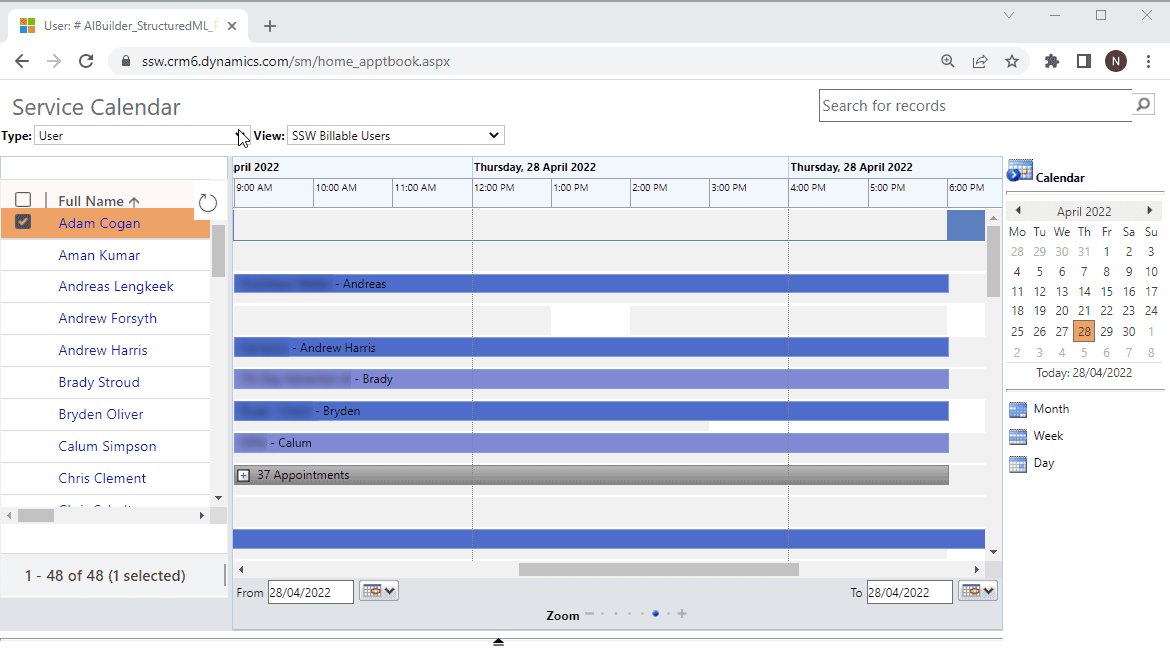Enhance CRM usage for users by applying essential strategies that improve data management and streamline sales processes. Explore best practices for effective scheduling, tracking opportunities, and maximizing the capabilities of your CRM system.
The Dynamics 365 Release plans provide a snapshot of what Microsoft has been working on in the Dynamics 365 CRM business. You can use it to find out what was recently made generally available, released into public preview, is still being developed and tested, or is no longer developed.
While there is a web app available, Microsoft has now released a CRM mobile app for Apple, Android, and, of course, their own phone OS. It is only for CRM Online and CRM2013 On-Premise.
We used to use the CRM Outlook Client Plugin for tracking emails and appointments in Outlook. With the latest Dynamics update, now we have another choice, the Dynamics 365 Outlook App, which is much lighter than the plugin.
Although you can create a Contact first, it's better to always create the Company first so you don't get orphan Contacts.
** **
Tip #1: Avoid duplicates - Make sure that there is no existing company before you make the entry.
Tip #2: Generally you should be creating these from leads, as it speeds up the process.
Tip #1: Avoid duplicates - Search to see if the Contact already exists before creating it.
Tip #2: Generally you should be creating these from leads, as it speeds up the process.
You need to know what's in the sales pipeline, and the way to do that is by entering a potential sale and it's value. ** **
Note: In order to enter new Opportunities into CRM, the company the Opportunity belongs to must already exist.
CRM 2013 has a nice way of reducing the amount of work needed to create a new Contact, Account and Opportunity. Simply make a Lead, and all three entities will be created in one go.
The process is:
Once you create an opportunity, you should click the "Add phone call" button to create an activity to call up the client after approximately 1 week. Each time you make this call, you should complete the activity and create a new one to follow up again when appropriate.
The general principle is that you track important emails as per Do you track important emails in CRM?
Microsoft Dynamics 365 allows users to track activities such as appointments, phone calls, emails, etc. This feature can be easily abused by users to record unrelated activities inside CRM. It is difficult sometimes to work out which type of activities should be recorded. These are the types of activities you should track in CRM:
There comes a time when some contacts in your CRM database might just be taking up space and not giving any value. At this point it is best to deactivate them.
It can be useful to have the contacts you deal with regularly in your Outlook (for offline access and easy editing).
This picture shows a flowchart of Campaigns and Quick Campaigns in CRM 2013:
It can sometimes be hard to work out when to use a lead vs a contact and company, or even an opportunity.
When going through leads to see if they should be converted to an Account/Contact/Opportunity or disqualified, any that do not contain contact details should be deleted instead of disqualified. The reason for this is that there is no benefit having only a name in the system, and it could produce false duplicates later if we were to import or create someone with the same name.
The data stored in CRM is useful on two counts. Firstly, it gives you a single source of truth for all customer related data. Secondly, you now have the ability to report on this data.
As an Account Manager, you'll frequently be required to find a free resource to put onto a project.

❌ Figure: Bad example - Constantly yelling out "who's free?"
Instead of going around and asking everyone “Who’s free next week?”, you should use the CRM Service Calendar.
The calendar provides a one page view of everyone’s availability for a given time period. Here’s what you need to do to access it:
It is the responsibility of Account Managers to book developers for known client work, however anyone can book a developer, including the developer themselves. Also if a developer notices they should be booked, but there's nothing in their calendar, and they can't figure out the below, as a minimum they should ask the Account Manager to book them.
The Rule of the 3 T's
Before booking developers, make sure you talk to them and check that they are cool with:
- The Time - How long is the project?
- The Tech - What skills are required?
- The Team - Who will they be working with?
To see which developers are available for booking:

🙂 Figure: OK example - Using the Service Calendar, you can see who is and is not available at a given time

✅ Figure: Good example - Build a Power BI report to show the CRM data more succinctly
There are a few different ways of booking developers for project work, either via Outlook or the browser.
People are often very inconsistent with how they make appointments. Sometimes they use full days and sometimes they give a start and end time. It's important to be consistent.
For a 1 day appointment
- Bad Example - An all day appointment is not as visible and doesn't tell the client when the developer will arrive and leave.
- Good Example - a start and end time will visibly fill his calendar and also give everyone a shared understanding of when the developer is working.
For multiple day appointments
CRM supports recurring appointments, and this allows for more flexibility in bookings, so you should always use these over using one long appointment for a booking.
When you look at the Service Calendar, you want to be able to see, at a glance, who is working on what.
To do this, the subject field of appointments should be as follows:
Prior to CRM 2013 if a CRM user wanted to:
- Show an error message
- Set a field value
- Set business required
- Set field visibility (show/hide fields)
- Lock or unlock a field
They would normally need to get a CRM developer involved to write JavaScript code to automate these actions.
Starting with CRM 2013 (and much improved in CRM 2015), users can now use Business Rules to automate these actions without getting a CRM developer involved.
per page
1 - 20 of 26 itemsper page
1 - 20 of 26 items